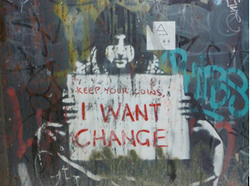Recovery centers
The building next to where I am living is a recovery centre for men that have an addiction to gambling or alcohol. The organisation that runs the recovery centre is called Ngwala Willumbong. They aim to create a positive environment for change for people who have had their life affected by drugs, alcohol and gambling. They do this trough a holistic approach which recognise the physical, emotional and spiritual need of people. Ngwala provides rehabilitation services to men and woman at their residential centres in metropolitan and regional Victoria.
The centre next to me is called Galiamble and it is a 24 hours residential centre for alcohol and rehabilitation. The admission into the centre is on a voluntarily basis, but court referrals are also taken. The centre is trying to offer their clients a home with a relaxed atmosphere. Each day the clients need to participate in activities that range from cultural relevant self-help and other development programs, which are run by professional tutors. They are also doing a lot of aboriginal art that they further sell after. There is also provided a clinical psychologist that is available for consultants with the clients.
The length of the stay varies for each client but they are encouraged to stay for a minimum 3 months. This is to allow them time to fully understand their abusing problem and get enough time to develop the skills, strengths and strategies needed for a life outside the centre. I once asked one of the guys at the centre why they would put a recovery centre in St Kilda so near all the bars, pubs and other temptations. What he answered is kind of true. He sad if you go out of the gate after a certain time they wont let you in a again and you have to stay out the whole night. It’s also a way of teaching you that there is a real life going on outside the gate and that you need to find the strengths to stay away for all the temptations. It won’t be any easier when you get out, so it’s better to have it as a part of the process.
The centre also provide different services for the clients after they get out, like housing and accommodations, helping them find jobs so they can get their life back on the right track again.
References:
http://www.ngwala.org/services/rehabilitation.htm
The building next to where I am living is a recovery centre for men that have an addiction to gambling or alcohol. The organisation that runs the recovery centre is called Ngwala Willumbong. They aim to create a positive environment for change for people who have had their life affected by drugs, alcohol and gambling. They do this trough a holistic approach which recognise the physical, emotional and spiritual need of people. Ngwala provides rehabilitation services to men and woman at their residential centres in metropolitan and regional Victoria.
The centre next to me is called Galiamble and it is a 24 hours residential centre for alcohol and rehabilitation. The admission into the centre is on a voluntarily basis, but court referrals are also taken. The centre is trying to offer their clients a home with a relaxed atmosphere. Each day the clients need to participate in activities that range from cultural relevant self-help and other development programs, which are run by professional tutors. They are also doing a lot of aboriginal art that they further sell after. There is also provided a clinical psychologist that is available for consultants with the clients.
The length of the stay varies for each client but they are encouraged to stay for a minimum 3 months. This is to allow them time to fully understand their abusing problem and get enough time to develop the skills, strengths and strategies needed for a life outside the centre. I once asked one of the guys at the centre why they would put a recovery centre in St Kilda so near all the bars, pubs and other temptations. What he answered is kind of true. He sad if you go out of the gate after a certain time they wont let you in a again and you have to stay out the whole night. It’s also a way of teaching you that there is a real life going on outside the gate and that you need to find the strengths to stay away for all the temptations. It won’t be any easier when you get out, so it’s better to have it as a part of the process.
The centre also provide different services for the clients after they get out, like housing and accommodations, helping them find jobs so they can get their life back on the right track again.
References:
http://www.ngwala.org/services/rehabilitation.htm

